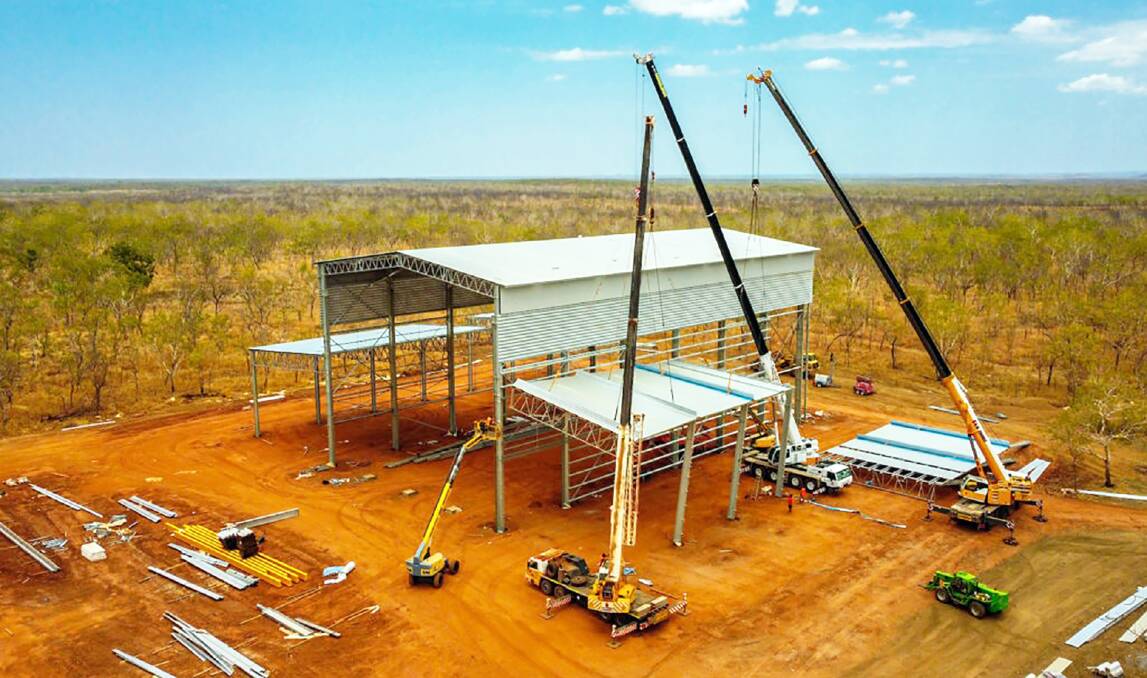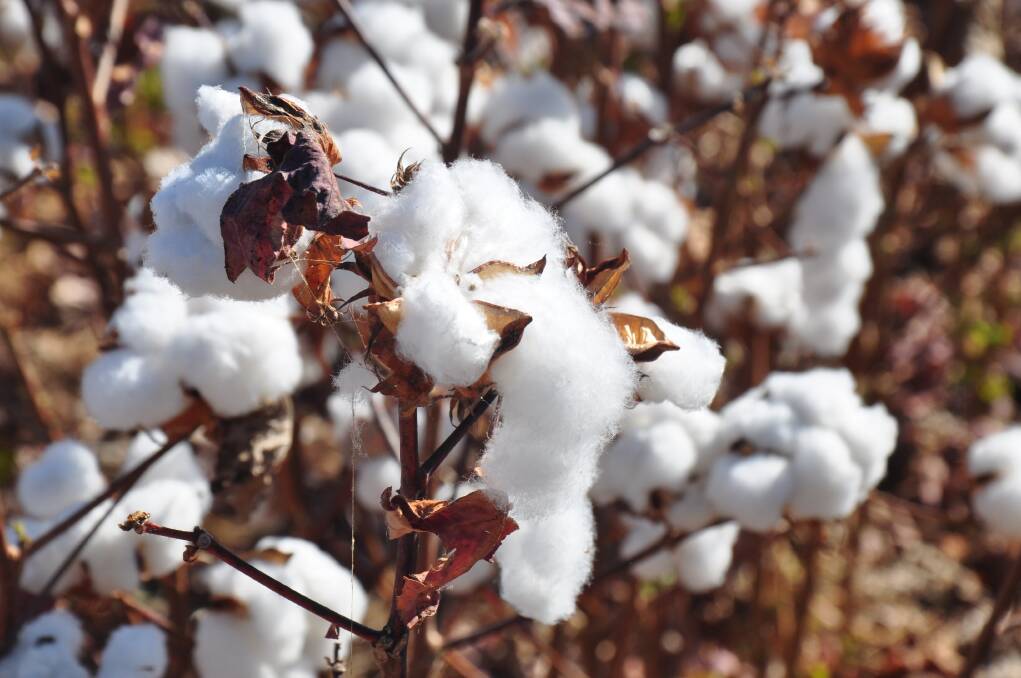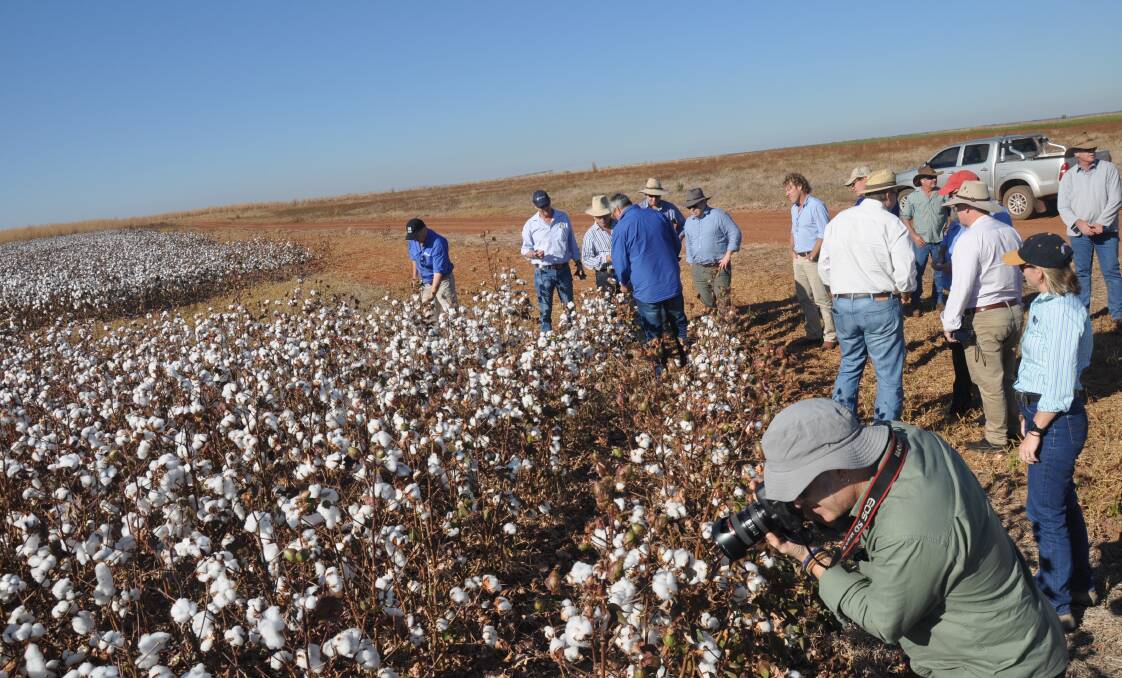
Construction of the Northern Territory's controversial first cotton gin is well advanced.
The gin is on track to process this year's harvest from an increasing number of enthusiastic fans cropping former cattle country.
But opponents of this new industry fear the impact of irrigation on iconic Top End waterways although growers say the bulk of their cotton is grown using wet season rains.
Environmentalists also predict there will be large scale clearing of station lease country necessary to grow broadacre crops like cotton.
Groups like Territory Rivers and Environment Centre NT have been monitoring progress of the gin's construction using satellite pictures.
The 21.5 metre high steel structure on Tarwoo Station near Katherine, about three hours south of Darwin, is housing machinery taken from the abandoned cotton gin at Tandou, near Broken Hill in southern NSW.
Tandou's big cotton growing operation was abandoned in 2017 when owners Webster Ltd accepted $78 million from the Federal Government for its 22,000 megalitre water allocation.
Tandou's plant was manufactured in Texas with new machinery for the Katherine gin also coming from Lummus Ag Technology in Georgia.
This year's NT cotton harvest is due to start in June with the gin scheduled to start processing a month later.

Cotton is enjoying a mini boom on the back of higher prices and water availability.
There has been a rapid uptake of cotton growing in the Territory but the lack of a local processor has forced them to pay exorbitant transport costs to have the crop processed in Queensland or NSW.
Unprocessed cotton was transported more than 3000km to be processed adding an extra 34 per cent to overall costs of production.
The cotton seed, seen as a vital part of the harvest for cattle feed, could not be economically transported back to the Territory.
NT growers are investing about $15 million in the new gin which is being built by Victorian shed company Entegra.
A number of growers across the border at Kununurra on the massive Ord irrigation scheme in Western Australia are also trying out cotton and are investing in the Katherine gin before they can afford their own plant.
The plans for a gin in the Kimberley received a boost late last year with the Northern Australia Infrastructure Facility approving a loan of up to $32 million to construct stage one of a cotton gin.
The NT Government says a cotton industry could generate $200 million for the Territory's economy.
Across northern Australia a new cotton growing industry would be worth an estimated $925 million.
Northern Cotton Growers Association president Bruce Connolly said it was an exciting time for the industry.
'The association is committed to fostering the local cotton industry and ensuring that the community enjoys the full economic benefits of cotton farming," he said.
The association includes growers from the NT and Kununurra.
Sam Buster is project manager for the Katherine gin.
Mr Buster is chief executive of RivCott, a grower-owned gin in the NSW Riverina region of Carrathool.
RivCott is managing the project and will operate the NT gin.
MORE READING: Corinella Farms selling off plant and equipment.
Mr Buster said the Katherine gin was designed to accommodate growth.
"In the Northern Territory it (cotton) is almost all rain-grown," he said.
"Right now, (that area) grows grass and trees which burns every year and goes up into the atmosphere, or that area runs one cow per 50 hectares. The return on that one cow is minimal compared to 50ha of cotton."
"It's another income stream with no relationship to the cattle market," Mr Buster said.
"The income from 1000ha is potentially quite a good income stream. It is intensive cropping, so it also generates a lot of employment."
He said early trials had shown rain alone could produce an average 3.5 bales a hectare in the Territory.
Yields were limited by the three month duration of the wet season while the cotton growing cycle is across five months.

Mr Buster said the NT industry was still in its infancy but the building of a gin would hopefully encourage others to grow cotton.
Environmentalists say there are already applications for thousands of hectares of land clearing on cattle stations they say are aimed at cotton growing.
They are also closely watching development of floodplain harvesting policy in the NT saying water would be diverted to private dams for cotton growing and away from waterways.
The first target for the small gin is to grow from between 12,000 to 20,000 bales a year to 60,000 to 70,000 bales.
Mr Buster said 120,000 bales a year was "viable" for a gin.
Both Mr Buster and Mr Connolly said southern growers were closely monitoring the birth of the Top End's cotton industry.
"There are a lot of southerners coming in, looking to buy land, because they see the potential," Mr Buster said.
Start the day with all the big news in agriculture! Sign up below to receive our daily Farmonline newsletter.


